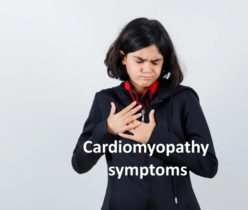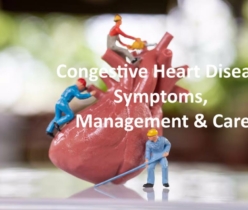Key Takeaways
- Cardiovascular health refers to the optimal functioning of the heart and blood vessels, essential for preventing heart disease and strokes.
- Common forms of cardiovascular disease include myocardial infarction and angina pectoris, with heart attacks and strokes being the leading causes of death worldwide.
- Key risk factors for cardiovascular disease include high blood pressure, obesity, and diabetes, with lifestyle changes and regular health screenings playing a crucial role in prevention.
- Recent advancements in cardiovascular research, such as the study of gut bacteria’s role in cholesterol management, are promising for future treatments.
- Promoting cardiovascular health equity is essential, as social determinants of health can impact an individual’s ability to achieve optimal heart health.
Understanding Cardiovascular Disease

Defining Cardiovascular Health
Cardiovascular Health refers to the well-being of the heart and blood vessels, ensuring they function optimally to circulate blood throughout the body. Good cardiovascular health is characterized by the absence of heart diseases and the maintenance of ideal cardiovascular metrics.
- Blood Pressure: Maintaining a normal range is crucial for cardiovascular health.
- Cholesterol Levels: Balanced levels help prevent plaque buildup in arteries.
- Physical Activity: Regular exercise strengthens the heart and improves circulation.
- Diet: A balanced diet rich in fruits, vegetables, and whole grains supports heart health.
- Body Weight: Achieving and maintaining a healthy weight reduces strain on the heart.
Emphasizing the importance of cardiovascular health is essential, as it is a major determinant of overall health and longevity. Preventive measures and lifestyle modifications play a pivotal role in maintaining a healthy heart and vascular system.
Common Forms of Cardiovascular Disease
Cardiovascular diseases encompass a range of conditions that affect the heart and blood vessels. The most prevalent forms include coronary artery disease (CAD), myocardial infarction (heart attack), and stroke. These conditions are leading causes of morbidity and mortality worldwide, with heart attacks and strokes accounting for the majority of cardiovascular-related deaths.
- Coronary artery disease is characterized by the narrowing or blockage of the coronary arteries, often due to plaque buildup.
- Myocardial infarction occurs when blood flow to a part of the heart is blocked, usually by a blood clot.
- A stroke happens when blood flow to a part of the brain is interrupted, leading to brain tissue damage.
Other common cardiovascular conditions include arrhythmia, heart failure, and hypertension. Each of these diseases can have a significant impact on an individual’s quality of life and requires prompt diagnosis and management.
While the diversity of cardiovascular diseases presents a challenge to healthcare systems, understanding their commonalities can aid in the development of more effective treatments and preventive measures.
Global Impact and Statistics
Cardiovascular diseases (CVDs) are a formidable global health challenge, with the World Health Organization (WHO) citing them as the leading cause of death worldwide. An estimated 17.9 million lives are lost each year to CVDs, a group of disorders affecting heart and blood vessels.
The burden of cardiovascular diseases is not distributed evenly across the globe, with variations seen across different regions and countries. The following table provides a snapshot of the disparities in CVD impact:
| Region | Estimated CVD Deaths (annually) |
|---|---|
| Africa | X million |
| Americas | Y million |
| Europe | Z million |
| South-East Asia | A million |
| Western Pacific | B million |
The fight against cardiovascular diseases requires concerted efforts that encompass prevention, treatment, and policy initiatives. It is crucial to strengthen healthcare systems and promote equitable access to resources and care.
Efforts to combat the global impact of CVDs include international programs, policy positions, and advocacy fact sheets aimed at raising awareness and guiding interventions. The WHO’s role is pivotal in coordinating these efforts, providing data collection tools, and offering insights and visualizations to inform health strategies.
Risk Factors and Prevention

Identifying Key Risk Factors
Understanding the risk factors for cardiovascular disease is crucial for both prevention and management. Key risk factors include lifestyle choices and genetic predispositions that can significantly increase the likelihood of developing heart-related issues.
- Family history/genetics
- Smoking
- High blood pressure
- Unhealthy diet
- High cholesterol
- Diabetes
- Physical inactivity
- Obesity
These factors are not isolated; they often interact with each other, compounding the risk. For instance, an unhealthy diet can lead to high cholesterol and obesity, which in turn increases the risk of high blood pressure and diabetes.
It is essential to recognize that while some risk factors like family history cannot be changed, many others can be modified through lifestyle adjustments and medical interventions.
Lifestyle Changes for Prevention
Adopting a heart-healthy lifestyle is crucial for preventing cardiovascular disease. Understanding your risk and making healthy choices can significantly lower your chances of developing heart-related issues. Key lifestyle changes include:
- Avoiding tobacco use, including cigarettes and smokeless tobacco
- Maintaining a healthy weight
- Eating a diet rich in fruits and vegetables
- Engaging in regular physical activity
- Limiting alcohol consumption
- Practicing safe sex and getting vaccinated
Making these changes not only contributes to cardiovascular health but also to overall well-being, reducing the risk of various other diseases.
It’s important to recognize that prevention is the most cost-effective strategy for health management. By modifying lifestyle habits, individuals can exert control over their health and reduce the burden of disease.
The Role of Regular Health Screening
Regular health screenings are a critical component in the prevention and early detection of cardiovascular disease. Screening can identify risk factors such as high blood pressure, high cholesterol, and diabetes before they lead to more serious complications. Additionally, screenings can detect conditions that may not present immediate symptoms, allowing for timely intervention.
While cardiovascular health is the primary focus, it’s important to note that comprehensive health screenings often include checks for other diseases, such as Breast Cancer. This holistic approach ensures that potential health issues are addressed across the board.
Emphasizing the importance of regular health screenings can lead to better health outcomes and a reduction in the incidence of cardiovascular disease.
Here are some steps to consider when planning for regular health screenings:
- Understand your personal health history and risk factors.
- Consult with healthcare professionals to determine the appropriate screenings for your age and health status.
- Schedule and attend all recommended screening appointments.
- Follow up on any abnormal results with further testing or specialist consultations.
Advancements in Cardiovascular Research

Recent Breakthroughs
The field of cardiovascular research has seen remarkable advancements in recent years. The American Heart Association (AHA) has named the top advances in cardiovascular disease research for 2023, highlighting significant strides in treatment and prevention. Among these, a new drug has shown promise in suppressing a key protein necessary for the development of hypertension, potentially revolutionizing the management of high blood pressure.
Another notable breakthrough involves thrombectomy, a procedure that could dramatically improve outcomes for stroke patients. This minimally invasive technique removes blood clots from the brain, restoring blood flow and reducing the risk of long-term disability.
The implications of these advancements are profound, offering hope for better patient outcomes and a reduction in the global burden of cardiovascular diseases.
While these developments are promising, the journey from research to routine clinical practice involves rigorous testing and regulatory approvals. Ongoing studies and clinical trials must continue pushing the boundaries of what is possible in cardiovascular care.
Ongoing Studies and Clinical Trials
The landscape of cardiovascular research is continually evolving, with numerous studies and clinical trials underway at any given time. These efforts are crucial for developing new treatments and understanding the complexities of cardiovascular diseases. Ongoing clinical trials are the backbone of medical advancements, providing the data needed to refine existing therapies and explore novel approaches.
The commitment to rigorous clinical research is a testament to the global dedication to improving cardiovascular health outcomes.
Current studies focus on a wide range of topics, from the efficacy of new medications to the impact of lifestyle interventions. Below is a list of key areas under investigation:
- New anticoagulant and antiplatelet therapies
- Genetic factors contributing to heart disease
- The effectiveness of remote monitoring technologies
- Innovative surgical techniques and devices
- Behavioral strategies for managing hypertension
These studies not only aim to enhance patient care but also to reduce the long-term burden of cardiovascular diseases on individuals and healthcare systems worldwide.
The Future of Cardiovascular Treatment
As we look toward the future of cardiovascular treatment, optimism is fueled by a century of progress in medical research and technology. The advancements made since the early 20th century have laid a foundation for innovative therapies and interventions that could redefine how we manage heart health.
The potential for personalized medicine, driven by genetic profiling and tailored treatment plans, promises a more targeted approach to cardiovascular care. This individualized strategy could lead to better outcomes and fewer side effects for patients.
The integration of technology in cardiovascular care is not just a possibility; it’s an impending reality. With the advent of wearable devices and telemedicine, continuous monitoring and real-time data analysis will become the norm, empowering patients and physicians alike.
The table below outlines potential areas of advancement in cardiovascular treatment:
| Area of Advancement | Description |
|---|---|
| Gene Therapy | Repairing or replacing faulty genes linked to heart disease. |
| Stem Cell Research | Regenerating damaged heart tissue. |
| Nanotechnology | Delivering drugs directly to affected areas, minimizing systemic side effects. |
| Artificial Intelligence | Enhancing diagnostic accuracy and predicting patient outcomes. |
While the journey ahead is filled with challenges, the relentless pursuit of knowledge and the spirit of innovation give us hope for a future where cardiovascular disease is no longer a leading cause of mortality.
Living with Cardiovascular Disease

Managing Chronic Conditions
Living with cardiovascular disease often means managing chronic conditions daily. Medication adherence is crucial for maintaining heart health and preventing complications. Patients must understand their medication regimen and the importance of taking it as prescribed.
Effective management also involves a holistic approach to health, including:
- Regular physical activity tailored to individual capabilities
- A heart-healthy diet rich in fruits, vegetables, and whole grains
- Stress reduction techniques such as meditation or yoga
- Regular monitoring and communication with healthcare providers
It is essential for patients to be proactive in their care, seeking support when needed and staying informed about their condition. This empowers individuals to make decisions that positively impact their health and wellbeing.
Support resources and communities play a vital role in providing the necessary information and emotional support to manage life with a chronic cardiovascular condition. These resources can range from patient education programs to support groups and online communities.
Rehabilitation and Recovery
Recovery from cardiovascular disease often involves a comprehensive rehabilitation program that addresses both physical and emotional healing. Cardiac rehabilitation is a critical step in the journey towards regaining strength and improving heart health. It typically includes exercise training, education on heart-healthy living, and counseling to reduce stress and improve mental health.
Patients who engage in group therapy and support networks during rehabilitation may experience numerous benefits. These include feeling less isolated, a reduction in anxiety about the future, and a more optimistic outlook on recovery. A sense of community and shared experience can be powerful medicine in itself.
The goal of rehabilitation is not just to restore physical function but also to empower patients to make lifestyle changes that can prevent future cardiac events. This holistic approach is essential for long-term health and well-being.
Here is a brief overview of the components of a cardiac rehabilitation program:
- Exercise training to rebuild strength and endurance
- Nutritional counseling to promote heart-healthy eating habits
- Stress management techniques to improve emotional health
- Medication management to optimize treatment
- Education on managing risk factors and recognizing warning signs
Support Resources and Communities
Navigating life with cardiovascular disease can be challenging, but a robust network of support resources and communities can make a significant difference. Patients and caregivers can access a variety of resources, ranging from podcasts and audio files that provide information about treatment and side effects, to community events like information sessions and activities designed to promote well-being.
- Order Resources
- Podcasts & Audio Files
- Community Resources
- Download Resources
- Information about cancer, treatment, and side effects
- Information about practical and emotional support
- Information about work, financial, and legal issues
Community events play a pivotal role in providing support and fostering connections among those affected by cardiovascular diseases. These events often include mindfulness programs, relaxation workshops, and support for carers, which are essential for both initial diagnosis and long-term management.
While cardiovascular health is the focus, it’s important to acknowledge the intersection with other health conditions, such as cancer. Resources that provide comprehensive care and information about managing multiple health challenges are invaluable.
Understanding the available support and actively participating in community resources can empower individuals to manage their condition more effectively and maintain a higher quality of life.
Promoting Cardiovascular Health Equity
Addressing Disparities in Healthcare
Cardiovascular health disparities are a critical issue that mirrors the broader challenges seen in healthcare, such as those in cancer treatment. Addressing these disparities is essential for achieving health equity.
- Mistrust and bias within healthcare systems can lead to underrepresentation in clinical trials and research, impacting the applicability of findings across diverse populations.
- Socioeconomic factors, including income and education levels, significantly influence access to care and health outcomes.
- Geographic location can also be a barrier, with rural areas often lacking adequate healthcare facilities.
By systematically dismantling the barriers to equitable healthcare, we can ensure that advancements in cardiovascular health benefit all segments of the population.
Efforts to address healthcare disparities must be multifaceted, involving policy changes, community engagement, and a commitment to inclusivity in clinical research. The goal is to create a healthcare system that serves the needs of every individual, regardless of their background or circumstances.
Community Programs and Initiatives
Community programs and initiatives play a pivotal role in promoting cardiovascular health equity. These efforts are designed to engage and empower individuals and groups, particularly those in underserved communities.
- Indigenous Cultural Safety & Humility
- Diabetes Prevention & Control Program
- Maine Cardiovascular Health Program
- Social Impact Funds like the Heritage Brick Walk and Kids Heart Challenge
By fostering community engagement and providing resources for prevention and management, these programs aim to reduce the incidence and impact of cardiovascular diseases.
Corporate partnerships and fundraising events, such as Australia’s Biggest Morning Tea and Relay For Life, also contribute significantly. They not only raise awareness but also fund vital research and support services. The involvement of health professionals through professional information sharing and referrals is crucial to the success of these initiatives.
Policy and Advocacy for Inclusive Health
Achieving health equity is a pivotal goal in the realm of cardiovascular health. Health equity is realized when every individual has the opportunity to reach their full health potential, without being hindered by social or economic barriers. Advocacy plays a crucial role in this, as it involves pushing for policies that address disparities and promote inclusiveness in healthcare.
Efforts to advocate for inclusive health can be seen through various initiatives and policy positions that aim to create a more equitable healthcare landscape. For example:
- Advocacy Fact Sheets provide information on key health issues
- Policy Positions outline the stances taken on important health policies
- Social Impact Funds support community-based health projects
These tools and resources are designed to empower communities and policymakers to make informed decisions that can lead to more equitable health outcomes.
The journey towards inclusive health is ongoing, with many important goals yet to be achieved. It is essential to continue advocating for policies that not only improve health outcomes but also ensure that these improvements are accessible to all, regardless of social standing or geographic location.
Conclusion
In conclusion, cardiovascular health is a critical aspect of overall well-being, with heart disease being a leading cause of mortality globally. Understanding the various cardiovascular diseases, their causes, symptoms, and the latest research is essential for prevention and management. Embracing a healthy lifestyle, including regular exercise, a balanced diet, and monitoring risk factors like high blood pressure and cholesterol, can significantly reduce the risk of heart attacks and strokes. Individuals must be proactive about their heart health, regardless of age, and for society to promote health equity, ensuring that everyone has the opportunity to achieve optimal cardiovascular health. The collective efforts in research, public health initiatives, and personal health practices can lead to a heart-healthy and stroke-free future.
Frequently Asked Questions
What is cardiovascular health?
It refers to the well-being of the heart and blood vessels, ensuring they function effectively to circulate blood throughout the body, delivering oxygen and nutrients to tissues, and removing waste products.
What are the most common forms of cardiovascular disease?
The most common forms of cardiovascular disease include myocardial infarction (heart attack), angina pectoris (chest pain), stroke, hypertension (high blood pressure), and atherosclerosis (plaque buildup in arteries).
How many people are affected by cardiovascular diseases worldwide?
Cardiovascular diseases are the leading cause of death globally, claiming an estimated 17 million lives each year, with heart attacks and strokes accounting for the majority of these deaths.
What are the key risk factors for cardiovascular disease?
Key risk factors for cardiovascular disease include unhealthy diet, physical inactivity, tobacco use, harmful alcohol consumption, high blood pressure, high cholesterol, diabetes, obesity, and family history of heart disease.
How can one lower the risk for cardiovascular disease?
Lowering the risk for cardiovascular disease can be achieved through lifestyle changes such as eating a balanced diet, engaging in regular physical activity, avoiding tobacco use, limiting alcohol consumption, and managing stress.
What advancements are being made in cardiovascular research?
Cardio research is exploring gut bacteria for cholesterol, new drugs, and heart-healthy foods like blueberries.





